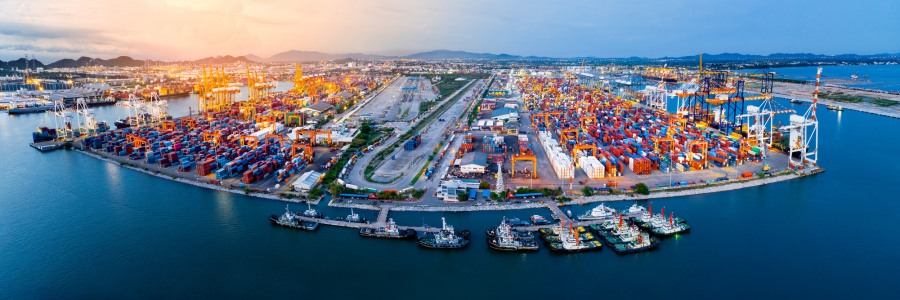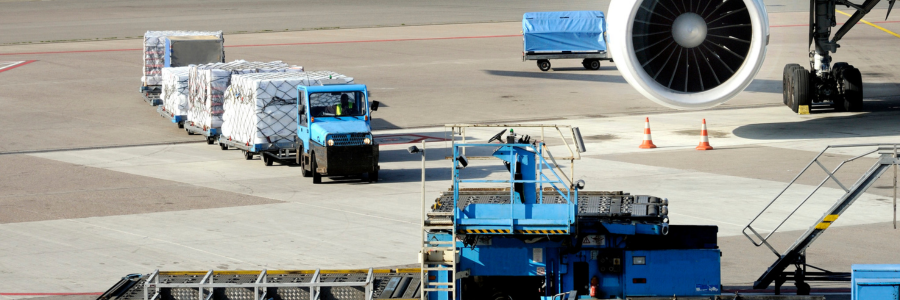The e-commerce industry is experiencing continued growth, and this poses challenges for freight forwarders aiming to deliver efficient and fast shipments. In 2024, there will be significant trends in sea freight and air freight as businesses seek cost-effective and time-sensitive shipping options. Let's explore the upcoming trends that will shape the e-commerce freight landscape in the coming year.
Sea Freight Trends in 2024
Sea freight has traditionally been the preferred method for transporting large quantities of goods, but it has not been the go-to choice for time-sensitive e-commerce shipments. However, the situation is about to change. A noteworthy trend in sea freight for 2024 is the reintroduction of expedited services aimed at meeting the demands of e-commerce. For example, Zim Integrated Shipping Services plans to relaunch its eCommerce Xpress (ZEX) service, offering faster transit times from South China to the US West Coast. This service aims to provide a cost-effective alternative to air freight, meeting the needs of businesses seeking competitive shipping solutions.
While some experts have expressed concerns about attracting e-commerce cargo to sea freight, the increasing demand for timely deliveries calls for faster transit times. Sea freight can position itself as a viable solution for e-commerce cargo by focusing on speed, cost-competitiveness, and reliable service. Forwarders can leverage the growing e-commerce demand and gain a significant market share.

Air Freight Trends in 2024
Air freight has been the preferred choice for time-sensitive and high-value cargo in the e-commerce sector. The industry has experienced a surge in demand recently, mainly driven by the e-commerce boom. As a result, air cargo rates have increased, and capacity has become tighter. In 2024, freight forwarders can expect these trends to continue as e-commerce businesses strive to meet their customers' expectations for swift deliveries.
E-commerce shipments occupy a substantial portion of available air cargo space, particularly on major routes like the China-North America corridor. This increased demand has led to higher air cargo rates and limited belly cargo space due to low recovery in long-haul passenger flights from China. Air freight rates have steadily climbed, presenting cost-efficiency challenges to businesses as e-commerce giants compete for air cargo capacity.

The Synergy of Sea Freight and Air Freight
Sea Freight and air freight have traditionally served different roles in logistics, but the growing e-commerce sector demands a more integrated approach. Forwarders can anticipate a growing reliance on multimodal transportation strategies to optimize cost and speed.
By utilizing the strengths of both transport modes, freight forwarders can offer customized solutions for e-commerce businesses. For instance, sea freight can handle bulk shipments, while air freight can cater to time-sensitive or high-value products. In 2024, forwarders should prioritize developing efficient and streamlined processes that allow for seamless transfers between sea freight and air freight. This integration empowers businesses to leverage the advantages of both modes of transport.
The Role of Technology in Multimodal Freight
The evolving e-commerce logistics landscape necessitates innovative technological solutions. In 2024, freight forwarders will heavily rely on technology to optimize operations and enhance customer experiences. Suitable tech solutions can be easily accessed through the 7ConNetwork forwarders network.
Cloud-based platforms like the 7Connetwork booking platform, artificial intelligence, and data analytics will play a crucial role in enabling forwarders to efficiently manage e-commerce shipments across various transport modes. Real-time tracking and visibility will become standard, allowing businesses and customers to monitor shipments throughout the entire supply chain. Automation will streamline processes, minimize errors, and improve overall efficiency.

Conclusion
As the e-commerce industry expands, freight forwarders must adapt to the increasing demands for efficient and cost-effective shipping solutions. In 2024, sea freight will take significant strides in serving time-sensitive e-commerce shipments and challenging traditional air freight options. The relaunch of expedited sea freight services reflects the industry's response to the need for faster transit times and cost-competitiveness.
However, air freight remains a significant player in e-commerce logistics. With growing demand and capacity constraints, forwarders must find ways to optimize air cargo operations and strive for cost-efficiency. The integration of sea freight and air freight through multimodal transportation strategies will be crucial in delivering tailored solutions to businesses.

Technological advancements will play a pivotal role in meeting the evolving needs of the e-commerce sector. Freight forwarders in 2024 will heavily rely on cloud-based platforms, artificial intelligence, and data analytics to enhance operational efficiency and provide real-time tracking and visibility.
The future of e-commerce freight lies in the symbiotic relationship between sea freight and air freight, supported by robust technological solutions. By embracing these trends, freight forwarders can position themselves as leaders in this rapidly evolving industry and successfully meet the demands of e-commerce businesses.